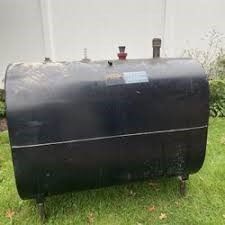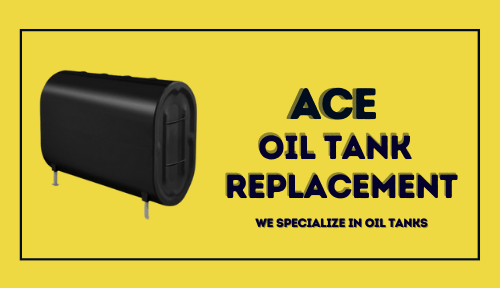Cost to Replace an Oil Tank: Complete Guide
If you are a homeowner with an oil tank, you may be wondering about the cost to replace it when the time comes. The cost of replacing an oil tank can vary depending on several factors.
Factors such as tank size, location, material, and installation equipment can all impact the overall cost. Additionally, costs for labor, permits, and disposal of the old tank can add up quickly.
Don't let the cost of replacing an oil tank catch you off guard. In this article, we will provide a comprehensive pricing guide to help you understand the different factors that impact the cost of oil tank replacement.
Key Takeaways:
- The oil tank replacement cost can vary based on several factors such as tank size, location, material, and installation equipment.
- Labor costs, permits, and disposal fees may also add to the overall cost of replacement.
- A professional should be hired for oil tank replacement to ensure safety and proper installation.
- Financing options such as personal loans and home equity loans are available for those who need to replace their oil tank.
- When considering the cost to replace an oil tank, it is important to weigh the potential risks of delaying or avoiding replacement.
Factors Affecting the Cost to Replace an Oil Tank
Oil tank replacement involves several factors that can impact the final cost. It's essential to consider these factors to estimate the accurate cost of replacing an oil tank. Here is a breakdown of the primary factors for oil tank replacement cost:
| Factor | Description |
|---|---|
| Tank size | The price of an oil tank will increase with its size. Larger tanks hold more oil, so they cost more to produce and transport. |
| Tank location | The location of the tank also plays a role in its cost. If the tank is in a challenging location, such as a basement or crawlspace, additional labor may be required, which can increase the cost. |
| Tank material | Oil tanks are typically made of steel or plastic. Steel tanks are more expensive but have a longer lifespan, while plastic tanks are more affordable and have a shorter lifespan. It's crucial to consider the pros and cons of each material before making a choice. |
| Additional equipment needed | Additional equipment may be required during installation, such as a new oil line or a carbon monoxide detector. These additional items can increase the final cost of the oil tank replacement. |
By considering these factors, you can estimate the cost of replacing your oil tank accurately. It's important to keep in mind that the final price you pay will depend on your unique situation.
Pricing Guide for Oil Tank Replacement
When considering an oil tank replacement, it's essential to have a clear understanding of the costs involved. The pricing guide below outlines the average costs for different tank sizes and materials, as well as additional costs for labor, permits, and disposal of the old tank.
| Tank Size | Material | Average Cost |
|---|---|---|
| 275 gallons | Steel | $1,000 - $1,500 |
| 275 gallons | Plastic | $1,500 - $2,000 |
| 550 gallons | Steel | $1,500 - $2,500 |
| 550 gallons | Plastic | $2,000 - $3,000 |
Get a free quote
Roth oil tank pg
We will get back to you as soon as possible.
Please try again later.


These costs are meant to give you a rough idea of what to expect, but keep in mind that additional factors can also influence the price. For example, location can impact labor costs, while the need for additional equipment or permits can also add to the overall price.
It's crucial to obtain a detailed quote from a licensed professional to get an accurate idea of the total cost for your particular situation. They can assess your needs, factor in all costs, and give you a clear idea of what to expect before replacement begins.
Hiring a Professional for Oil Tank Replacement
Undertaking an oil tank replacement requires a certain level of expertise and experience to ensure proper installation and avoid potential hazards. For this reason, hiring a professional for the job is highly recommended.
A professional oil tank replacement service provider like Ace Oil Tank Replacement will have the necessary equipment and training to safely remove and dispose of the old tank, install the new one correctly, and ensure that the system is functioning correctly before leaving.
"While DIY oil tank replacements may appear to be a cost-effective option, the risks involved often outweigh the benefits. Installation errors can lead to oil leaks, property damage, and environmental pollution, resulting in costly remediation expenses."- Ace Oil Tank Replacement
When choosing an oil tank replacement service provider, make sure to verify that they are licensed, insured, and certified for the task. Additionally, request references and check online reviews to ensure quality work and customer satisfaction.
Financing Options for Oil Tank Replacement
Replacing an oil tank can be a costly endeavor, and not everyone has the cash on hand to cover the expense. Fortunately, there are several financing options available for those who need to fund their oil tank replacement.
Personal Loans: One option is to obtain a personal loan. These loans can be secured or unsecured and are typically available through banks, credit unions, and online lenders. The interest rates and terms will vary depending on the lender and your creditworthiness.
Home Equity Loans: If you own your home and have equity, you may be able to take out a home equity loan to cover the cost of your oil tank replacement. These loans use your home as collateral and typically have lower interest rates than personal loans.
Specialty Financing Programs: Some companies offer specialty financing programs specifically for oil tank replacements. These programs may offer low-interest rates, flexible repayment terms, or other incentives to make financing a replacement tank more affordable.
Before deciding on a financing option, be sure to shop around and compare interest rates, terms, and fees. It's important to choose a financing option that fits your budget and allows you to comfortably make your monthly payments.
Conclusion
Replacing an oil tank can be a significant financial investment, but it is necessary to ensure safety and compliance. It is essential to consider various factors that can impact the cost, such as tank size, type of oil tank, location, and material, before embarking on a replacement project.
Hiring a professional for oil tank replacement can help ensure a safe and efficient installation, as well as avoid potential risks associated with DIY replacement. Financing options such as personal loans, home equity loans, and specialty financing programs can provide assistance in funding tank replacement.
In conclusion, it is crucial to approach oil tank replacement with careful consideration and thorough research. By taking into account the factors that influence the cost, seeking professional help, and exploring financing options, homeowners can successfully and safely replace their oil tanks.
FAQ
How much does it cost to replace an oil tank?
The cost to replace an oil tank can vary greatly depending on several factors. On average, homeowners can expect to spend between $1,500 and $4,000 for a standard 275-gallon oil tank replacement.
What are some factors that can affect the cost to replace an oil tank?
Several factors can influence the cost of replacing an oil tank. These include the size of the tank, its location, the material it is made of (such as plastic or steel), and any additional equipment or upgrades needed during installation.
Is there a pricing guide available for oil tank replacement?
Yes, there is a pricing guide available for oil tank replacement. The average cost for a new oil tank ranges from $1,000 to $2,500, with additional costs for labor, permits, and the disposal of the old tank. It is advisable to obtain quotes from reputable contractors to get an accurate estimate for your specific situation.
Should I hire a professional for oil tank replacement?
It is highly recommended to hire a professional for oil tank replacement. Installing a new oil tank requires specialized knowledge and expertise to ensure that it is done safely and efficiently. A professional contractor will have the necessary skills and equipment to handle the installation, reducing the risk of leaks or other issues.
What options are available for financing oil tank replacement?
There are several financing options available for oil tank replacement. Homeowners can consider personal loans, home equity loans, or specialty financing programs specifically designed for energy-related upgrades. It is advisable to research and compare the terms and interest rates of different financing options before making a decision.
Ace oil tank replacement is a leading provider of above ground oil tank services, including oil tank installation, replacement, and removals. With extensive experience acquired through years of serving customers throughout Springfield, Massachusetts, you can entrust us to deliver the oil storage tank solutions you're looking for.

